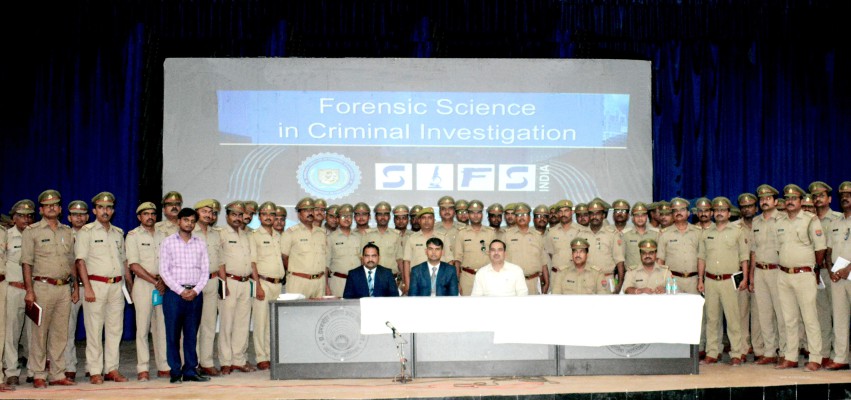The role of police to keep a check on criminals and maintaining a crime-free society is known to everyone.
However, due to the massive use of technology, methods used by criminals to commit crimes have also become high-tech. Because of this, crime-solving techniques used to date are alone not sufficient to convict a criminal.
So police now use forensic science techniques to collect and evaluate evidence from the crime scene. It helps them analyze what might have occurred during the crime and helps reach a fool-proof conclusion.
Let us now see how the police force uses forensic science to solve the crime.
What is Forensic Science?
The word ‘forensic’ originated from the Latin word ‘forenses’ meaning forum.
In the early ages, debates related to judicial proceedings took place at a public place referred to as a forum. Hence the term forensic relates to the judicial system or court.
Along with science, it refers to using various scientific tools and techniques to examine and resolve crimes. Evidence collection, preservation, and analysis are the steps to be followed to prosecute an offender in a court of law.
Today police globally use forensic science techniques to punish criminals to minimize injustice.
Role of Forensic Science in Criminal Investigation
Forensic science plays an essential role in criminal investigation, and nowadays, it is almost impossible for the police to convict a criminal without it.
It helps police collect all types of physical and digital evidence and perform expert analysis to make it acceptable in the court of law.
Special training is provided to the police force to carry out such tasks.
A single officer cannot perform all tasks. Each one is assigned a specific task.
It is a huge responsibility to collect and examine the evidence to maintain its authenticity carefully.
A few Physical Evidence that Police might find at the Crime Scene
- Hair, blood, body fluids, skin tissues, etc.
- Footwear marks
- Tire track marks
- Tools and tools marks
- Fingerprints, palm prints, footprints
- Digital evidence like mobile phone records
- Firearms and fired ammunition
- Dust and dirt
- Questioned documents
- Explosives
- Paint
- Glass
Who Conducts Crime Scene Investigation?
The number and type of workforce required to carry out an investigation depending on the kind of crime and the size of the law enforcement agency. Also, a team of specialized police officers can carry out the crime scene investigation.
Steps involved in Conducting Crime Scene Investigation
Establishing Crime Scene Dimensions
The main area or the focal point where the crime took place is located, followed by establishing an area radiating out from the focal point that shows the maximum possibility of availability of the physical evidence.
Establishing Security
The scene is secured with yellow crime scene tape to prevent further addition or subtraction of the material from the crime scene. Only investigators are allowed to enter or exit from the scene, and records of entry or exit for everyone else are maintained once the area has been sealed.
Planning, Communicating, and Coordinating
Investigators decide the type of crime before collecting the evidence and might gather additional information related to the crime. It helps them to formulate an evidence collection strategy.
Conducting Initial Crime Scene Survey
The lead investigator conducts an initial crime scene survey to identify valuable evidence, take notes, and photograph the scene and the evidence. Several other conditions, such as the position of furniture, condition of lights, the temperature of the place, etc., are also noted.
Documenting the Crime Scene
With a pre-defined plan, police conduct a thorough investigation to collect all possible evidence. It involves using digital and video cameras to capture the scene. Also, sketches and diagrams are created if required.
Conducting a Review
Investigating police personnel conduct a review or second survey of the crime scene to ensure that the crime scene has been appropriately searched and collected all the possible evidence.
Recording and Preserving Evidence
An inventory log is created containing a description of each piece of evidence. It should match the photo captured at the crime scene and the description mentioned in the report. It helps in avoiding confusion during the investigation process.
Final Words
Several private and government forensic science laboratories have been established over the past few years.
It indicates the rising need for forensic experts to carry out the crime scene investigation process efficiently.
Also, special police training programs are conducted nationwide to equip them with the latest forensic science techniques.
Trained police officers can perform the investigation process themselves without being dependent on external agencies. It helps in speeding up the entire process.


